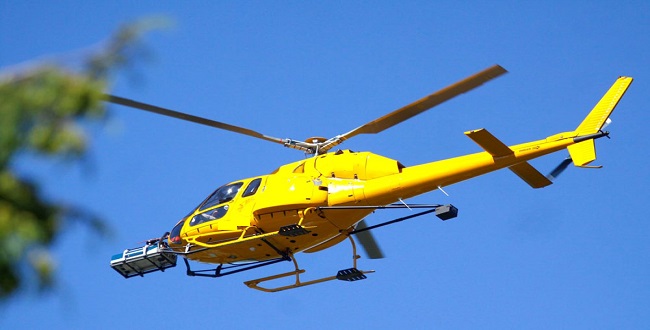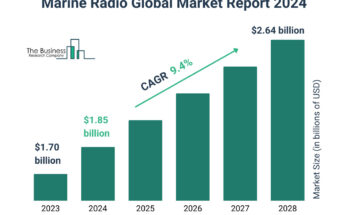The Global Helicopter Blades Market is primarily driven by increasing demand for helicopters in diverse sectors, including defense, emergency medical services, and commercial transportation, coupled with technological advancements enhancing blade efficiency and performance. Additionally, rising global air traffic and the need for more efficient rotorcraft contribute to the market’s growth.
According to TechSci Research report, “Global Helicopter Blades Market – Industry Size, Share, Trends, Competition Forecast & Opportunities, 2028”, the Global Helicopter Blades Market stood at USD 1.08 Billion in 2022 and is anticipated to grow with a CAGR of 4.21% in the forecast period, 2024-2028. The global helicopter blades market has been experiencing consistent and substantial growth. This growth can be attributed to various factors, including significant advancements in material technology that have led to the development of more efficient and durable helicopter blades. Moreover, the increasing demand for helicopters in both military and civilian sectors has played a crucial role in driving the market growth. Additionally, the rising adoption of helicopters in emergency medical services has further fueled the demand for helicopter blades. These blades are designed to meet the specific requirements of emergency medical services, ensuring safe and efficient transportation of patients. Overall, these factors have contributed to the continuous expansion of the global helicopter blades market.
In terms of material technology, the trend towards lighter yet more durable materials has evolved significantly over the years. With advancements in composite materials, such as carbon fiber composites, manufacturers have been able to achieve remarkable properties that make them increasingly favored in various industries.
One key advantage of composite materials is their exceptional corrosion resistance, which allows them to withstand harsh environments and extend the lifespan of products. Additionally, these materials possess a high strength-to-weight ratio, meaning they offer impressive strength while being lightweight. This characteristic is particularly beneficial in applications where weight reduction is crucial, such as in aerospace and automotive industries.
Moreover, composite materials exhibit improved fatigue life compared to traditional materials. This means that they can endure repeated stress and load cycles without experiencing significant damage or performance degradation. This enhanced durability translates to longer-lasting products and reduced maintenance costs.
The shift towards composite materials has prompted manufacturers to invest heavily in composite blade technology, especially in sectors such as wind energy and aviation. The utilization of composite blades in wind turbines and aircraft propellers has not only contributed to improved performance and energy efficiency but also driven market growth in the composite materials industry.
In conclusion, the continuous evolution of lighter yet more durable materials, particularly composite materials, has revolutionized various sectors. Their corrosion resistance, high strength-to-weight ratio, and improved fatigue life make them highly sought-after, leading to significant investments and market expansion.
The military sector remains a significant contributor to the global helicopter blades market. Rising geopolitical tensions worldwide have necessitated the procurement of modern, efficient helicopter fleets, in turn, fueling the demand for advanced helicopter blades. As military budgets increase globally, significant investments are being made in the development and acquisition of new generation helicopter blades, hence contributing to the market expansion.
Furthermore, the civilian sector is not far behind in terms of demand. The rising use of helicopters in emergency medical services (EMS) for quick patient transportation is a key factor propelling the market growth. The need for swift and timely medical interventions in critical situations has underscored the importance of helicopters, thus driving the demand for reliable helicopter blades.
Regionally, North America leads the market due to a sophisticated aviation industry and a significant military presence. The Asia-Pacific region, featuring emerging economies like China and India, is also projected to witness substantial growth due to increasing defense budgets and commercial helicopter usage.
Browse over market data Figures spread through 180 Pages and an in-depth TOC on “Global Helicopter Blades Market”
https://www.techsciresearch.com/report/helicopter-blades-market/20387.html
The Global Helicopter Blades Market represents a vital segment within the broader aerospace industry, playing a pivotal role in the efficiency, performance, and safety of rotorcraft. As helicopters continue to be indispensable in diverse sectors, including defense, emergency services, commercial transportation, and search and rescue missions, the demand for advanced and innovative helicopter blades is on the rise. The market is characterized by ongoing advancements in materials, manufacturing techniques, and technologies that enhance the capabilities of helicopter rotor systems. Here, we explore the key aspects and dynamics of the Global Helicopter Blades Market.
The demand for helicopter blades is primarily driven by the increasing need for versatile and efficient rotorcraft across various applications. Military modernization programs, emergency medical services, law enforcement, offshore oil and gas operations, and urban air mobility initiatives contribute to the market’s growth. The versatility of helicopters, with their ability to operate in confined spaces, hover, and provide access to remote areas, positions them as essential assets in critical missions.
Technological advancements play a central role in shaping the Helicopter Blades Market. Manufacturers are constantly innovating to improve the design, materials, and aerodynamics of helicopter blades. The incorporation of advanced materials such as composites, titanium, and lightweight alloys allows for weight reduction without compromising structural integrity. Additionally, the integration of smart technologies, including sensors and health monitoring systems, enhances the safety and maintenance of helicopter blades.
A prominent trend in the Global Helicopter Blades Market is the continuous evolution of materials and manufacturing techniques. Traditional materials like aluminum are being supplemented or replaced by advanced composites, which offer a superior strength-to-weight ratio. Carbon fiber-reinforced composites, in particular, provide exceptional strength and durability while reducing overall weight.
Manufacturers are also exploring additive manufacturing or 3D printing to create complex blade designs with optimized structures. This not only allows for greater flexibility in design but also contributes to the efficiency of the manufacturing process. The use of innovative materials and manufacturing techniques is fundamental to achieving the delicate balance required for helicopter blades – lightweight for efficiency and robust for safety and performance.
The integration of smart technologies for health monitoring is a transformative aspect of the Helicopter Blades Market. Real-time monitoring of the condition and performance of helicopter blades is facilitated by sensors embedded in the blades. These sensors collect data on factors such as vibrations, stress, and temperature, providing valuable insights into the health of the blades.
Condition-based maintenance, enabled by smart technologies, allows for proactive and efficient maintenance schedules. By continuously monitoring the blades, operators can detect potential issues before they escalate, minimizing downtime and optimizing overall safety. This trend aligns with broader industry efforts toward predictive maintenance and the utilization of the Internet of Things (IoT) in aviation.
Addressing noise reduction and minimizing environmental impact are key considerations in the Global Helicopter Blades Market. Rotorcraft noise, often a concern in urban and populated areas, is being mitigated through innovative blade designs, modified rotor configurations, and the use of advanced materials. Enclosed tail rotors and shrouded fans are among the technologies explored to further reduce the impact of helicopter operations on the ground.
Furthermore, the industry is increasingly focused on overall sustainability. Efforts to reduce emissions, improve fuel efficiency, and adopt eco-friendly manufacturing processes are integral to the environmental responsibility initiatives within the Helicopter Blades Market. As environmental regulations become more stringent, manufacturers are embracing the challenge of creating blades that not only perform optimally but also align with global sustainability goals.
The adoption of variable-speed rotor systems represents a significant trend in the Helicopter Blades Market. Unlike traditional fixed-speed rotor systems, variable-speed systems allow adjustments in rotor speed based on operational requirements. This adaptability enhances efficiency, maneuverability, and noise reduction across various flight conditions.
Variable-speed rotors optimize helicopter performance during different phases, such as hovering, forward flight, and descent. This flexibility contributes to fuel efficiency and reduced vibration levels, improving overall operational capabilities. Manufacturers are investing in research to develop and integrate variable-speed technologies into existing and future helicopter designs, making this trend a focal point for innovation in the market.
The incorporation of unmanned rotorcraft systems, including UAVs and autonomous helicopters, is gaining prominence in the Helicopter Blades Market. Unmanned systems offer versatility in applications such as surveillance, reconnaissance, cargo transport, and search and rescue missions. The design of helicopter blades for unmanned systems requires considerations specific to these platforms, including vertical takeoff and landing capabilities and extended endurance.
As technology continues to advance, the integration of unmanned rotorcraft systems is expected to expand, influencing the design and capabilities of helicopter blades. The trend aligns with the broader evolution toward autonomous aerial systems and reflects the industry’s commitment to exploring innovative and efficient solutions for various operational needs.
In conclusion, the Global Helicopter Blades Market is characterized by a dynamic interplay of technological innovation, materials advancement, and a focus on sustainability. The demand for high-performance helicopter blades is driven by the diverse applications of rotorcraft in military, commercial, and emergency services. As the industry responds to evolving challenges and opportunities, stakeholders must remain attuned to the transformative trends shaping the future of helicopter blades. From the integration of smart technologies to address noise concerns and environmental impact, the Helicopter Blades Market is undergoing a paradigm shift that reflects the broader trends in aviation toward efficiency, safety, and environmental responsibility.
Major companies operating in Global Helicopter Blades Market are:
- Kaman Corporation
- The Boeing Company
- Carson Helicopters, Inc.
- Hindustan Aeronautics Ltd
- Airbus SE
- Lockheed Martin Corporation
- Eagle Aviation Technologies, LLC
- Erickson Incorporated
- Van Horn Aviation, LLC
Download Free Sample Report
https://www.techsciresearch.com/sample-report.aspx?cid=20387
Customers can also request for 10% free customization on this report.
“The Global Helicopter Blades Market is at the forefront of innovation, witnessing a transformative evolution driven by advancements in materials, smart technologies, and sustainability initiatives. With a focus on lightweight yet robust materials, integration of smart sensors for real-time health monitoring, and a commitment to noise reduction and environmental responsibility, the market reflects the dynamic landscape of modern rotorcraft technology. Embracing trends such as variable-speed rotor systems and the incorporation of unmanned rotorcraft systems, the market is poised for continued growth, offering enhanced performance, safety, and adaptability across diverse applications, from military operations to emergency services and commercial aviation.” said Mr. Karan Chechi, Research Director with TechSci Research, a research-based management consulting firm.
“Helicopter Blades Market – Global Industry Size, Share, Trends, Opportunity, and Forecast, Segmented By Application (Civil Helicopters and Military Helicopters), By Blade Type (Main Rotor Blade and Tail Rotor Blade), By Region, Competition, 2018-2028 ”, has evaluated the future growth potential of Global Helicopter Blades Market and provides statistics & information on market size, structure and future market growth. The report intends to provide cutting-edge market intelligence and help decision makers take sound investment decisions. Besides, the report also identifies and analyzes the emerging trends along with essential drivers, challenges, and opportunities in Global Helicopter Blades Market.
Contact Us-
TechSci Research LLC
420 Lexington Avenue, Suite 300,
New York, United States- 10170
M: +13322586602
Email: [email protected]
Website: www.techsciresearch.com




